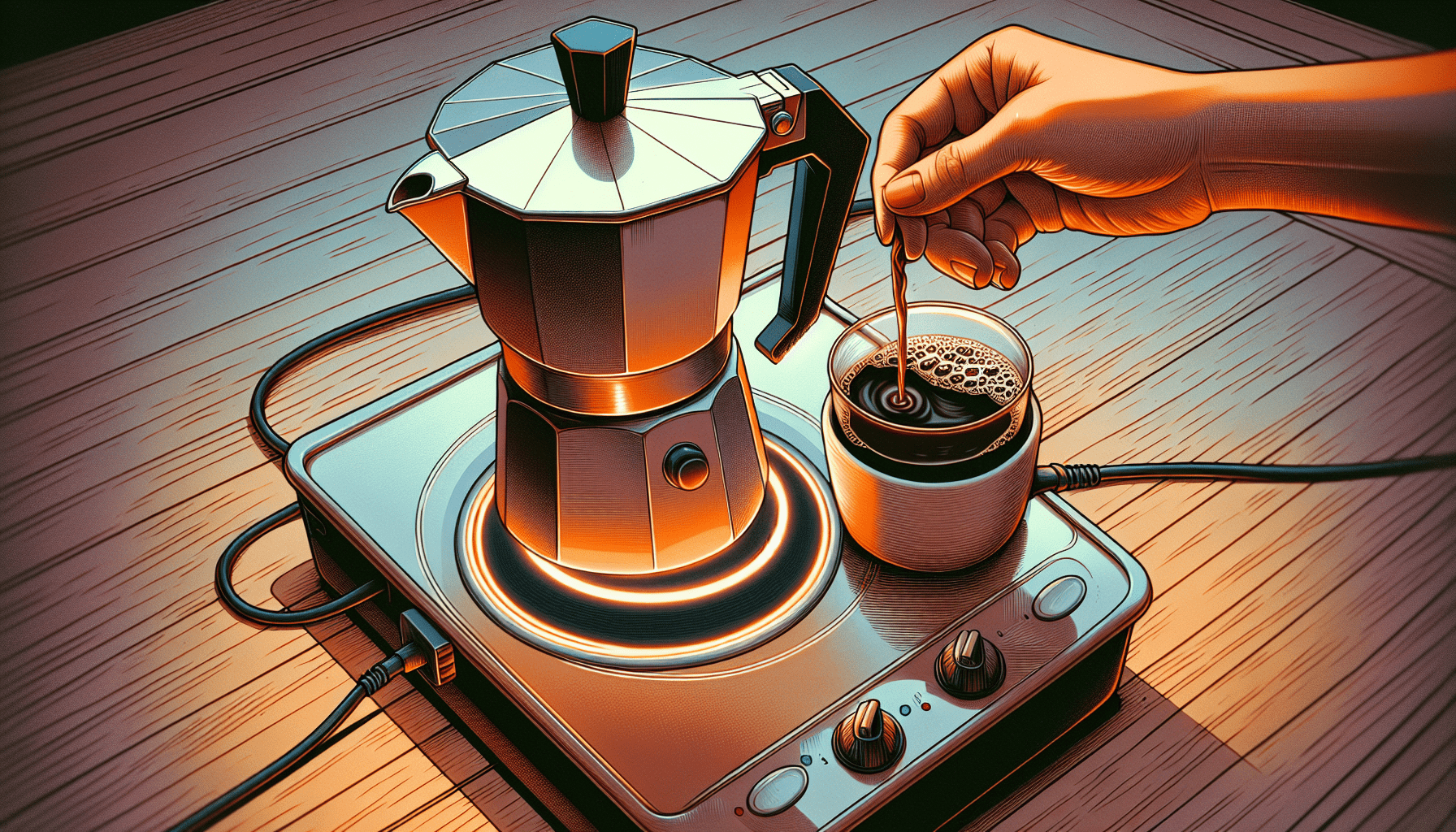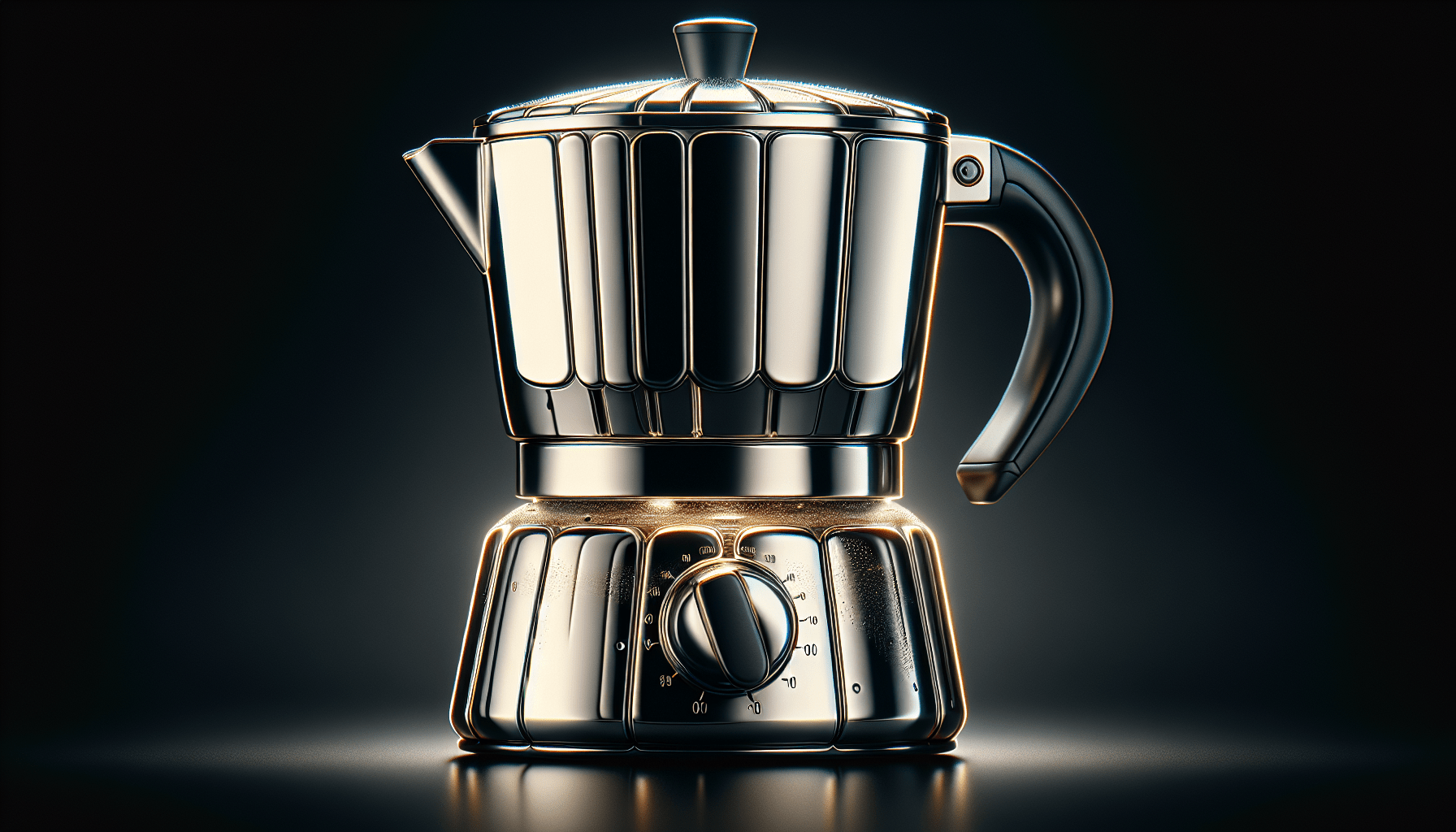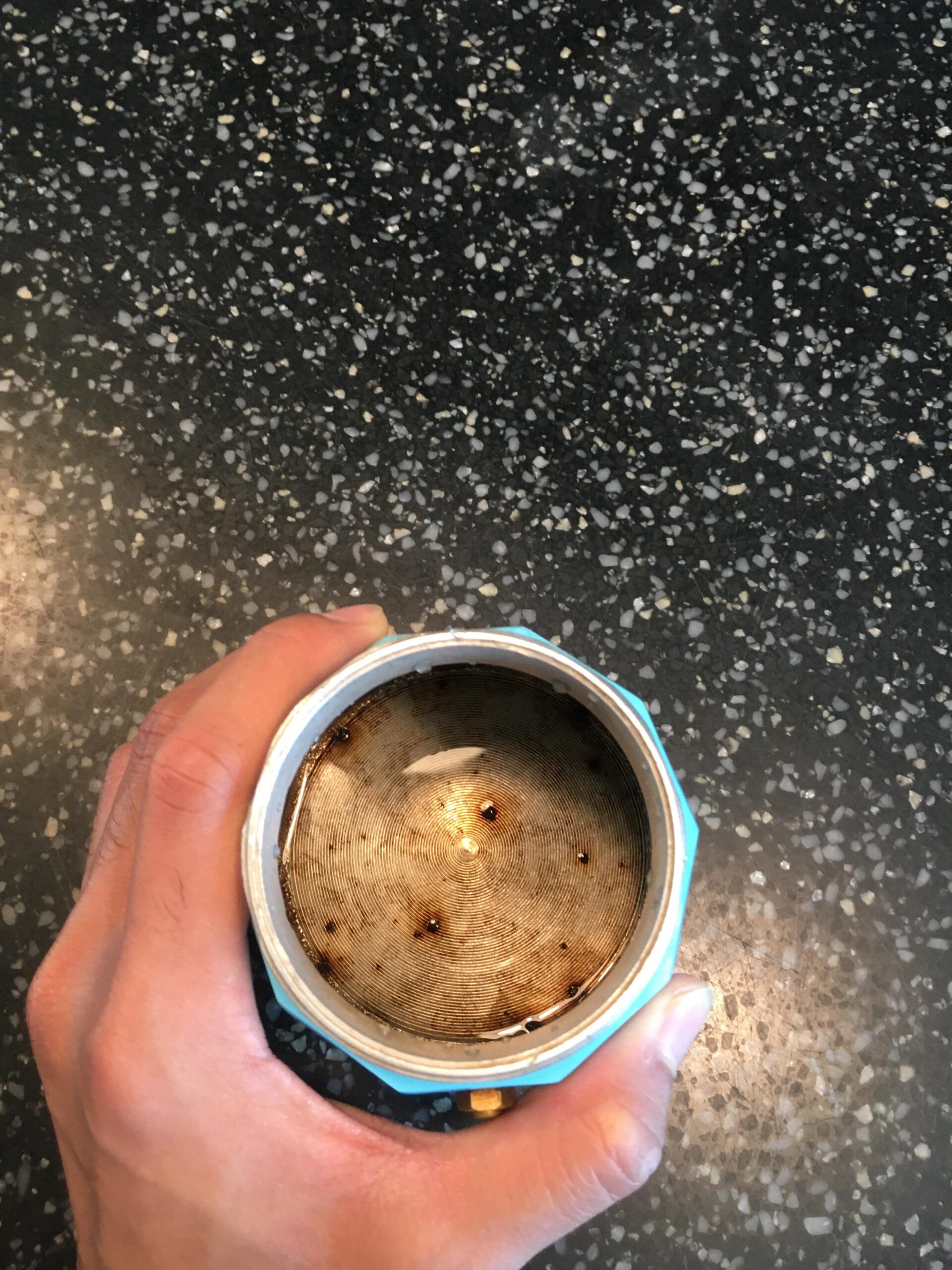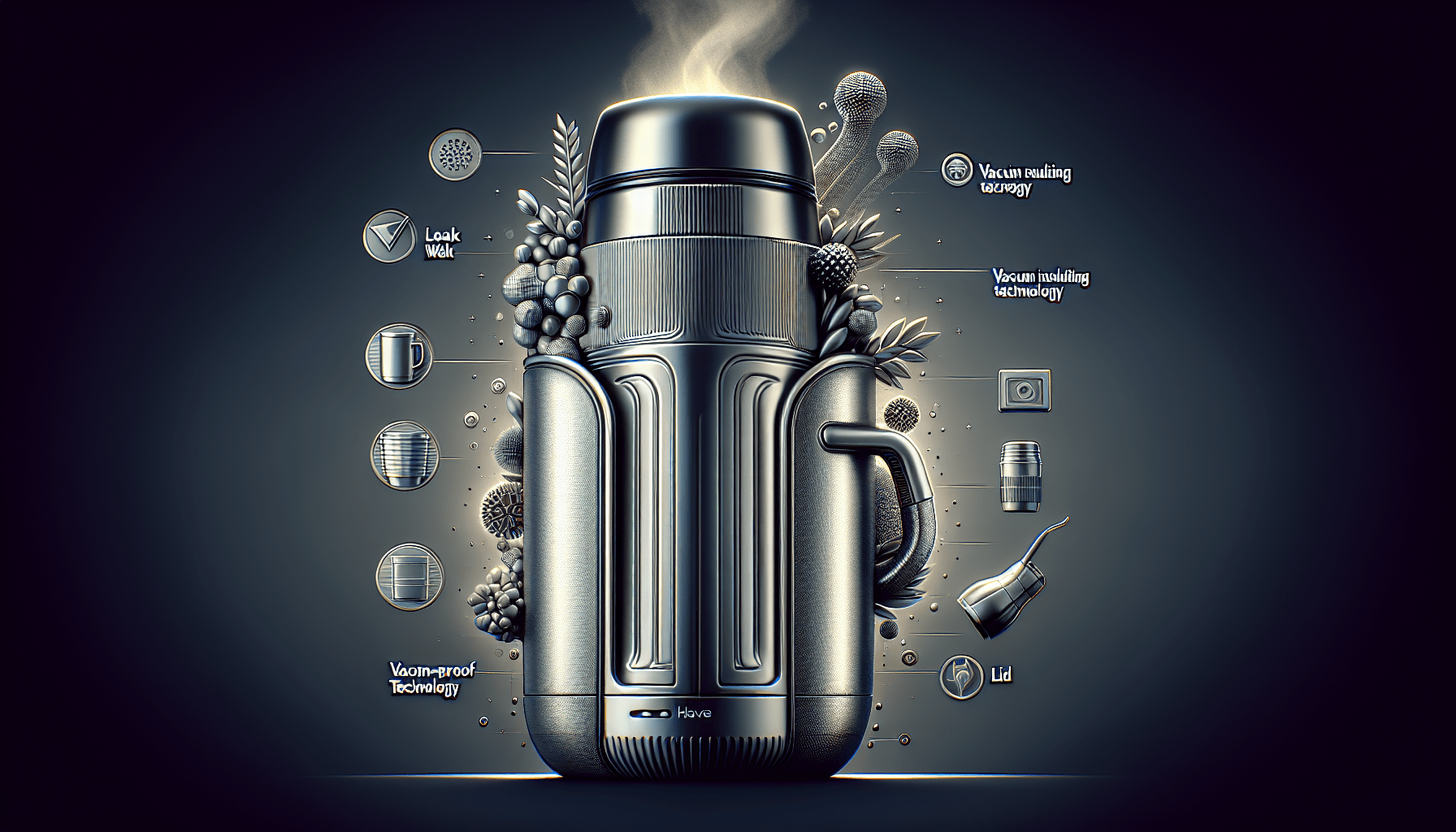Have you ever wondered if it’s possible to use a coffee maker pot on an electric coil stove? Well, the answer might surprise you. In this article, we will explore the compatibility between coffee maker pots and electric coil stoves, uncovering whether it’s a feasible option for all the coffee enthusiasts out there. So, before you start brewing that morning cup of joe, let’s find out if your trusty coffee maker pot can handle the heat of an electric coil stove.
Using a Coffee Maker Pot on an Electric Coil Stove
If you’re a coffee enthusiast who loves the convenience of an electric coil stove but also enjoys the simplicity of a coffee maker pot, you may be wondering if the two are compatible. In this article, we will explore the compatibility of a coffee maker pot with an electric coil stove, the differences between a coffee maker pot and a stovetop coffee pot, the advantages of using a coffee maker pot on an electric coil stove, considerations before using it, steps to safely use it, potential risks and precautions, alternative methods to use a coffee maker pot safely, cleaning and maintenance tips, and some final thoughts and recommendations.
Compatibility of Coffee Maker Pot with Electric Coil Stove
Before diving into the details, it is important to understand if your coffee maker pot is compatible with an electric coil stove. While many coffee maker pots are designed to be used on regular stovetops, not all of them are suitable for electric coil stoves. It is crucial to check the manufacturer’s recommendations and guidelines to ensure the safe use of your coffee maker pot on an electric coil stove.
Understanding the Differences: Coffee Maker Pot vs. Stovetop Coffee Pot
Before proceeding, let’s clarify the difference between a coffee maker pot and a stovetop coffee pot. A coffee maker pot is typically made of glass or stainless steel and is designed to brew coffee using a machine. On the other hand, a stovetop coffee pot, also known as a Moka pot or an espresso pot, is a traditional brewing device that brews coffee by passing boiling water pressurized by steam through ground coffee.
Advantages of Using a Coffee Maker Pot on an Electric Coil Stove
Using a coffee maker pot on an electric coil stove offers several advantages. Firstly, it allows you to conveniently brew your favorite coffee at home without the need for more specialized equipment. Secondly, it provides an efficient and consistent brewing process, ensuring a flavorful cup of coffee every time. Lastly, using a coffee maker pot on an electric coil stove is cost-effective compared to investing in additional coffee brewing equipment.
Considerations before Using a Coffee Maker Pot on an Electric Coil Stove
While using a coffee maker pot on an electric coil stove can be a convenient option, there are a few considerations to keep in mind to ensure safety and efficiency.
Check Manufacturer’s Recommendations
It is essential to carefully review the manufacturer’s recommendations and guidelines for using your coffee maker pot on an electric coil stove. These recommendations will provide specific instructions on the compatibility, maximum heat settings, and proper usage of your coffee maker pot on an electric coil stove.
Determining the Coffee Maker Pot Material
The material of your coffee maker pot plays a crucial role in ensuring its compatibility with an electric coil stove. Glass or stainless steel coffee maker pots are typically suitable for electric coil stoves. However, it is important to avoid using coffee maker pots made of materials that are not suitable for direct heat, such as plastic or ceramic, as they may melt or crack.
Assessing the Electric Coil Stove’s Stability
Before using your coffee maker pot on an electric coil stove, make sure that the stove is stable and level. Uneven surfaces can cause the coffee maker pot to tilt or even topple over, leading to accidents or spills. It is important to place the coffee maker pot on a stable and flat surface for safe and efficient brewing.
Steps to Safely Use a Coffee Maker Pot on an Electric Coil Stove
To safely use a coffee maker pot on an electric coil stove, follow these steps:
1. Preparing the Electric Coil Stove
Before placing your coffee maker pot on the electric coil stove, ensure that the stove is clean and free from any debris or spills. Make sure to remove any flammable materials or objects from the vicinity of the stove to minimize the risk of accidents or fire hazards.
2. Placing the Coffee Maker Pot on the Electric Coil Stove
Once the electric coil stove is ready, place your coffee maker pot carefully on the coil. Ensure that the pot is stable and positioned securely in the center of the coil. Avoid placing it on a coil that is larger than the base of the coffee maker pot, as this can cause uneven heating and potentially damage the pot.
3. Monitoring the Heating Process
While the coffee maker pot is on the electric coil stove, it is important to monitor the heating process closely. Adjust the heat settings according to the manufacturer’s recommendations. Avoid exceeding the recommended heat levels, as this can lead to overheating and potential damage to the coffee maker pot. Keep an eye on the pot and turn off the heat once the brewing process is complete.
Potential Risks and Precautions
Using a coffee maker pot on an electric coil stove carries certain risks, but taking proper precautions can minimize these risks.
Risk of Damaging the Coffee Maker Pot
Using the wrong type of coffee maker pot or placing it on an unsuitable heat level can result in damage to the pot. To avoid this, always check the manufacturer’s recommendations and guidelines before using a coffee maker pot on an electric coil stove. Additionally, ensure that the coffee maker pot is positioned securely and that the heat settings are within the recommended range.
Potential Fire Hazards
When using an electric coil stove, there is a risk of fire hazards if proper precautions are not taken. Make sure to keep flammable materials away from the stove while the coffee maker pot is in use. Never leave the stove unattended, and always turn it off once the brewing process is complete. It is also advisable to have a fire extinguisher readily available in case of emergencies.
Precautions to Minimize Risks
To minimize the risks associated with using a coffee maker pot on an electric coil stove, it is important to follow these precautions:
- Read and follow the manufacturer’s recommendations and guidelines carefully.
- Use a coffee maker pot that is compatible with an electric coil stove.
- Ensure the electric coil stove is stable and level before using the coffee maker pot.
- Monitor the heating process closely and avoid exceeding the recommended heat levels.
- Keep flammable materials away from the stove and have a fire extinguisher nearby.
Alternative Methods to Use a Coffee Maker Pot Safely
If using a coffee maker pot on an electric coil stove poses too many risks or is not recommended by the manufacturer, there are alternative methods to safely brew coffee at home.
Using a Heat Diffuser
A heat diffuser is a helpful tool that can be placed between the electric coil stove and the coffee maker pot to distribute the heat evenly and minimize the risk of damage. By using a heat diffuser, you can create a buffer zone between the pot and the coil, ensuring a safer brewing experience.
Using a Pour-Over Coffee Maker
For those who still prefer a simpler brewing method and a cleaner taste, a pour-over coffee maker can be a great alternative. This method involves pouring hot water manually over coffee grounds, allowing for precise control over the brew time and strength of the coffee. Pour-over coffee makers are typically made of heat-resistant materials and do not require a direct heat source.
Considering a Stovetop Espresso Maker
If you enjoy the rich and robust flavor of espresso, a stovetop espresso maker can be a suitable alternative to a coffee maker pot. These devices are specifically designed for stovetop use and use steam pressure to brew espresso. Stovetop espresso makers are available in various sizes and materials, ensuring compatibility with electric coil stoves.
Cleaning and Maintenance Tips for Your Coffee Maker Pot
To prolong the lifespan of your coffee maker pot and ensure the quality of your brewed coffee, proper cleaning and maintenance are essential.
Proper Cleaning Techniques
Regularly clean your coffee maker pot to remove any residue or leftover coffee oils that can affect the taste of your brew. Follow the manufacturer’s instructions for cleaning, and if applicable, disassemble the coffee maker pot for thorough cleaning. Use mild soap and warm water to clean glass or stainless steel pots.
Storage Recommendations
After cleaning, ensure that your coffee maker pot is completely dry before storing it. Moisture can lead to the growth of mold or mildew, potentially compromising the quality of your next brew. Store your coffee maker pot in a cool and dry place, away from any potential damage.
Regular Maintenance Schedule
Create a regular maintenance schedule for your coffee maker pot to ensure optimal performance. This includes descaling the coffee maker pot periodically to remove mineral deposits that can build up and affect the taste of your coffee. Use a descaling solution recommended by the manufacturer and follow the instructions carefully.
Final Thoughts and Recommendations
Using a coffee maker pot on an electric coil stove can be a convenient and cost-effective way to brew delicious coffee at home. However, it is essential to prioritize safety and ensure compatibility before using your coffee maker pot on an electric coil stove. Always check the manufacturer’s recommendations and guidelines, assess the coffee maker pot’s material, and ensure the stability of the electric coil stove.
If using a coffee maker pot on an electric coil stove is not recommended or poses too many risks, consider alternative brewing methods such as using a heat diffuser, a pour-over coffee maker, or a stovetop espresso maker. Each of these methods offers its own benefits and can provide a great cup of coffee without compromising safety.
Lastly, always seek guidance from the manufacturer if you have any doubts or concerns regarding the use of your coffee maker pot on an electric coil stove. Prioritizing personal safety and understanding your kitchen setup will ensure a pleasant and enjoyable coffee brewing experience.




